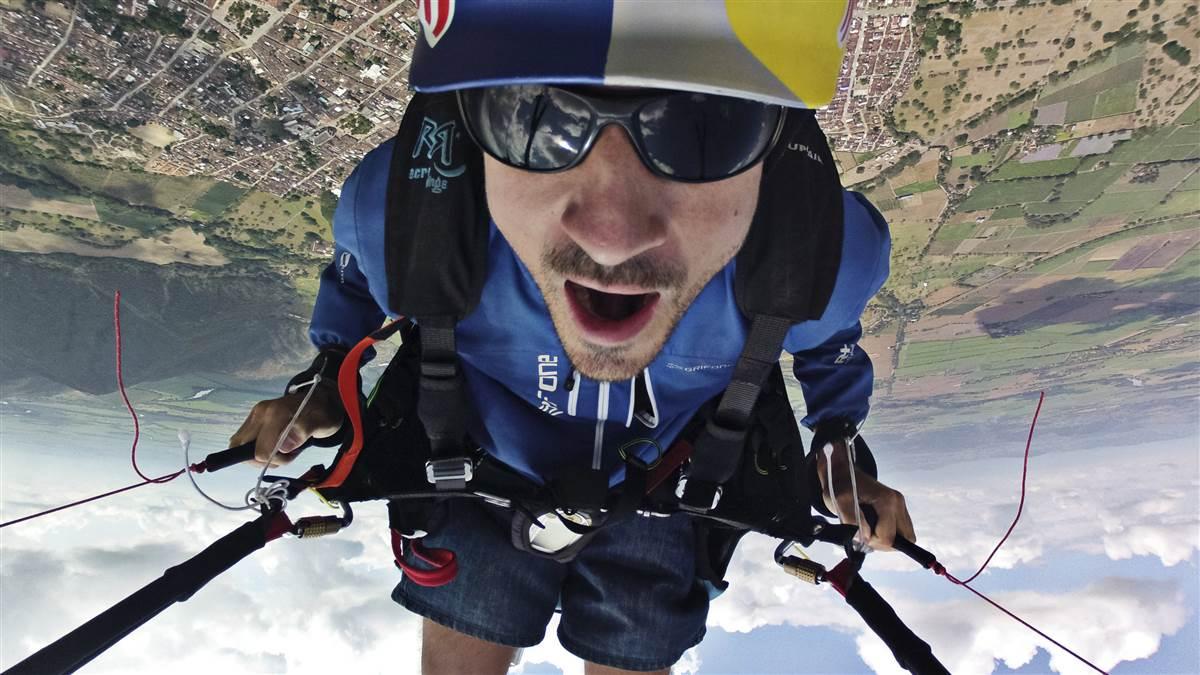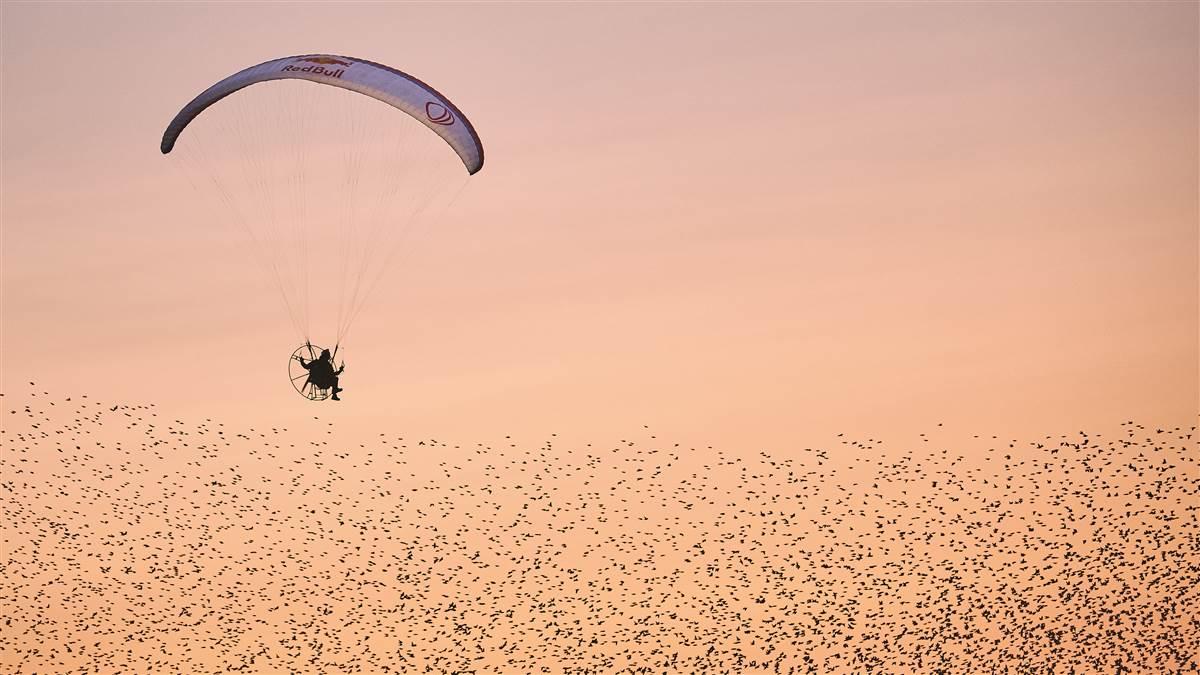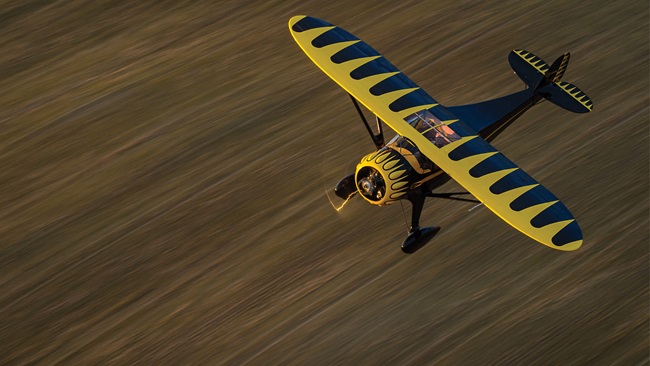Paraglider flocks with starlings
Starlings darken Denmark’s autumn sky in numbers so great they create a phenomenon called “Black Sun,” up to one million individual birds moving in massive murmurations that constantly shift their shape, appearing to flow through the sky like a fluid. Now add to this scene a paraglider with an electric motor and a man seeking an aerial connection with birds (but not actual contact, which could be dangerous).
Starlings can be found in many places, creating huge flocks known as murmurations, and Denmark hosts arguably the most awe-inspiring of these spectacles twice each year. In May, and then in even larger numbers in September and October, the birds converge from around the Baltic Sea to Tøndermarsken in southern Denmark.
The Black Sun (Sort Sol in Danish) draws many tourists, among them this year a 35-year-old champion paraglider pilot from Spain. Horacio Llorens, in media materials provided by Austrian energy drink giant Red Bull, explained that birds do his favorite kind of flying.
“To be a bird is the dream, it is why I fly in paragliding as I feel like a bird when I fly,” Llorens said.

Still very much a human pilot with the inclination to anticipate and avoid potential trouble, he noted that getting too close to the murmuration could prove problematic.
“If they get into my lines that could be very dangerous,” Llorens said. “It’s a first-time experiment. I don’t want to disturb the birds but be a part of them, be part of the flock, be one of them for a little while…just a few seconds. That would be something incredible as a pilot.”
Red Bull pronounced the experiment a success, that Llorens as able to “immerse at the beating heart of the flock” and moved with the birds through many twists and turns, propelled as quietly as he could be by an electric motor.
While pilots are usually disposed to keep their distance from birds (and one might wonder about the bird’s perspective on being joined in formation by a man hanging from a parachute with an electric fan strapped to his backside), Llorens is not the first to try flying with an avian flock: Consider Operation Migration, founded in 2001 to lead captive-bred whooping cranes on their ancestral migrations, and help the species re-establish.
Nor is flying with starlings the first attempt by Llorens to mix his loves of aviation and nature: Red Bull captured beautiful images of the five-time aerobatic paraglider champion flying his paraglider under the spectacular Aurora Borealis in the Arctic.





